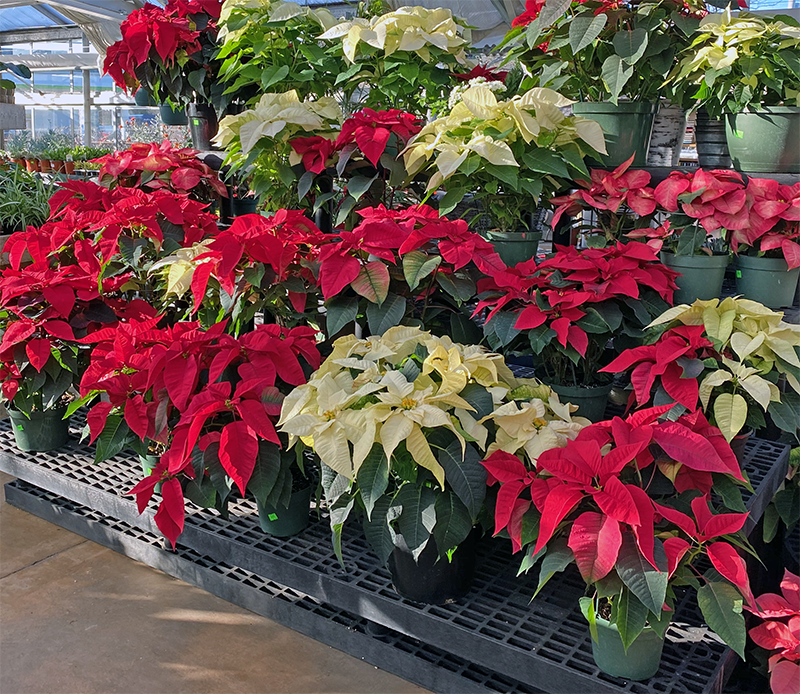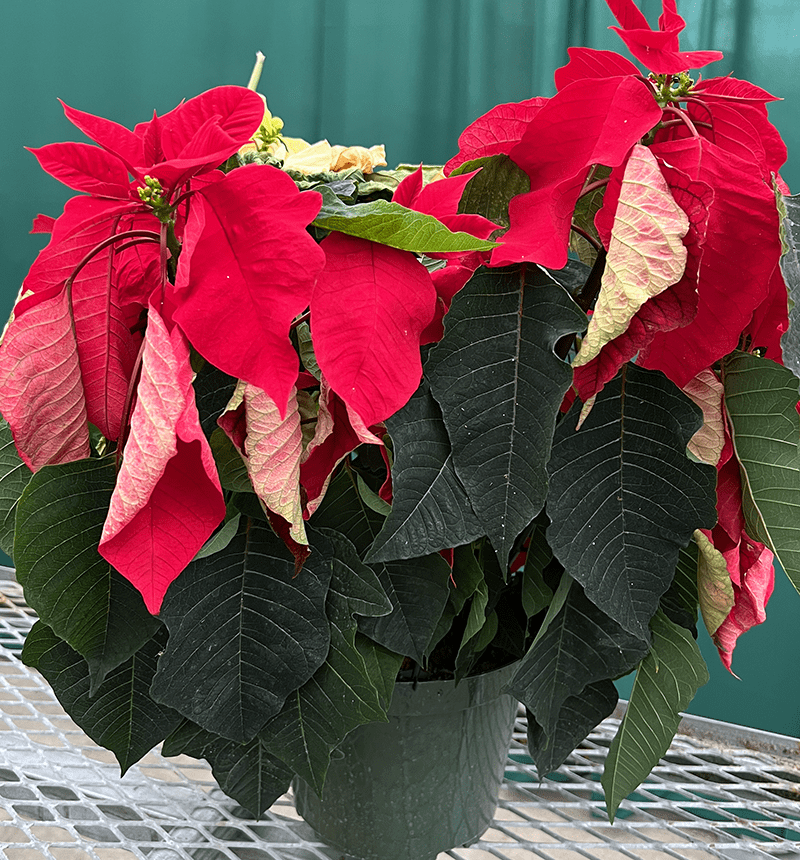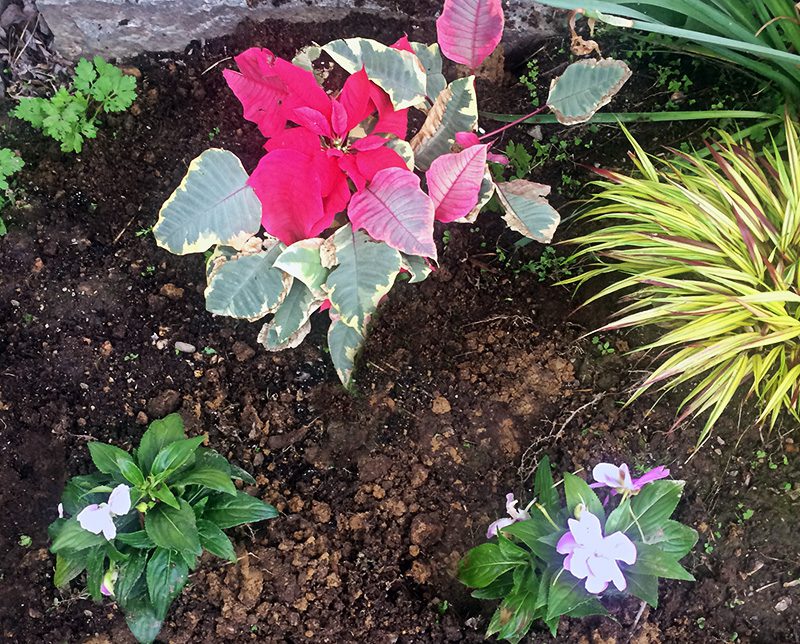Poinsettia Plants: Save It Or Say Goodbye?
Poinsettia Plants: Save It Or Say Goodbye?
Poinsettias (Euphorbia pulcherrima) are treasured Christmas plants because they bring big, bold, lush color into our homes in the darkest time of the year. From brilliant reds to pinks, peach, white, variegated and even yellow, this plant brings instant impact to holiday and houseplant displays. But after January 1st, many wonder if it’s possible to save their plant from year to year. And if it’s possible, is it worth doing so?
It’s fairly easy to keep a poinsettia looking good through the winter indoors, as long as you pay attention to the light and the watering methods. Here are 12 tips for success:

Light and Watering Is Important!
- Be sure any foil that wrapped the pot is removed so that excess water will drain out the bottom of the pot. Place the pot on a wide saucer so that you’re able to water well without the floor or table getting doused.
- Place the poinsettia plant in a very bright window that gets some direct sun during the day. An Eastern, Western, or South-facing exposure is good as long as shrubs or trees aren’t blocking the light from entering.
- Keep your plant in a warm room…Euphorbia pulcherrima is a plant that is native to Mexico, so you know that it’s not cold-tolerant!
- When you water your plant, soak the soil completely and let the excess water spill into the saucer. Leave the pot sitting in the water-filled saucer for up to an hour, but after that empty out that excess. Wait and don’t water the plant again until the soil starts to look and feel dry. Don’t let the plant wilt, however.
- Some people lift their poinsettia pot after watering to see how heavy it is. Then two or three days later, lift again to get a feel for how much lighter the plant is when dry. Do this again in two or three more days; you’ll soon learn to tell if the plant needs watering by how heavy or light it is as the soil dries.
- A plant that has gotten too dry in between waterings is likely to loose lower leaves or some of the colorful bracts. (What looks like the flowers on this plant are actually a modified leaves which are called bracts. The flowers are the tiny yellow parts in the center of all of that color.)

7. In May, once the night temperatures are reliably above 50°, you can repot your plant in a slightly larger clay pot and put it outside for the summer. Place the plant in at least half day sun and continue watering when the soil is dry. Fertilize monthly (after watering well) or add some time-release fertilizer to the soil when you repot.
The Truth About Growing Poinsettias At Home
8. Here’s the truth about this plant when it is growing outside: The color will fade from the bracts, and the growth will be longer, leaner, and smaller than it was when you purchased the plant. By the end of the summer the growth will be all green.
9. In order to get the bracts to color-up again, your plant needs to be in 15 hours of darkness every night, starting in mid-September. During the day you’ll put that plant in the same sunny window, but from 5 PM to 8 AM it needs to be either covered by a heavy cardboard box or placed in a dark closet.
10. Keeping a poinsettia from year-to-year can be interesting and isn’t difficult. Your plant will be different than the ones raised by professional growers, however. A home-grown Euphorbia pulcherrima is taller, leaner and more open in habit. So you’ll need to decide if that’s okay with you, or if you’d rather have the sumptuous, luxuriant plant that we get in every December. And of course, it’s possible to have both!

11. If you want to keep a poinsettia into the future, do not plant it in the ground outdoors, but keep it in a separate pot. That way you won’t be disturbing the roots and you can more easily manipulate hours of darkness to make the plant color again. But if you just want to see what the plant will do in a garden, by all means plant it in a part or full sun location and fertilize. You can also add a poinsettia to a large, mixed-plant container as a foliage specimen. In either case, you won’t bring that plant back indoors in the fall. Poinsettias will die in the first hard frost.
12. It’s perfectly okay to toss a poinsettia in the compost after the holidays. After all, it’s given you far more long-lasting color than any cut flower bouquet would have.
See a photo of how poinsettia plants look in the wild! This will give you an idea of how the plant naturally grows.
2 Comments
Leave a Comment
Subscribe To Our Newsletter
Sign up for our weekly email about sales and events.

You said to start keeping it in the dark for 15hrs starting in mid-Sept, but when do you stop doing that? Mid-Sept til when? I got my first poinsettia this year and would like to keep it for as long as I can.
Keep the long nights up for at least 4 weeks – mid-September to the end of October would be great.